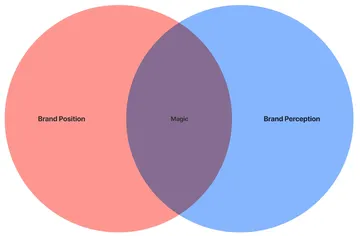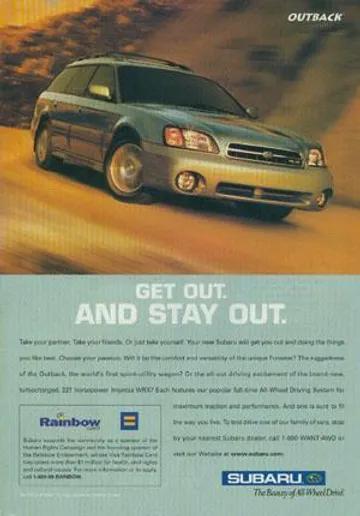What Quarterback Kirk Cousins Can Teach Us About Brand Perception

Gray Gill, Former Brand Writer
Article Categories:
Posted on
NFL quarterback and part-time brand strategist Kirk Cousins is here to help us understand the difference between brand positioning and brand perception.
Let’s talk about brand positioning and brand perception. Two very different –– but interconnected elements of a brand. Imagine a Venn diagram. Well, since a member of the Viget team recently taught us about aphantasia, or the inability to visualize things in your mind, I've gone ahead and added a visual aid here.

On one side you have your brand position. This is what you say your brand is. What you want to be known for. The space in the market you want to occupy. How you talk about your products and communicate their values. On the other side, you have brand perception. This is what customers think of you. When they see your logo, they have a certain emotional response. Beyond the functionality of your products, brand perception embodies the aspirational reasons people buy or use your products.
The Venn diagram is a circle for the most successful brands– the ones people are willing to pay for, the ones people gush about to their friends like a crush. The overlap between their position and how people perceive them lines up perfectly. This doesn’t mean that a brand should strive to be all things to all people. This is how you end up with a generic brand that doesn’t stand out. Nor does it mean that companies should constantly chase trends and roll out a new brand strategy each month to stay relevant to the latest whims of pop culture.
Brands are like action figures. Many stakeholders who invest months and years in creating an identity for their company or product want to treat their brand like a collectible action figure, never taking it out of the box. But the reality is that users, social media, and your competitors will take your brand off the shelf and play with it. Make sure you know how people interact with your brand differently or unexpectedly.
Kirk Cousins, yes that Kirk Cousins, professional NFL quarterback for the Minnesota Vikings, recently asked the Twitterverse to explain the difference between three well-known outdoor apparel brands –– L.L. Bean, Land’s End, and Eddie Bauer.
His question started a passionate discussion, racking up hundreds of replies in just a few hours. Watching it unfold, I realized that Kirk Cousins’ had unintentionally created a great case study on the importance of brand perception and differentiating from competitors. Hundreds of people chimed in, offering their take on the differences between the brands themselves and who these brands are for. The entire thing is such a good (and somewhat humorous) reminder that a brand is not necessarily what the CEO, founder, or marketing team says it is. It’s how the general public perceives your brand and who they associate your products with. Here are a few of my favorite summations of the target audiences for L.L. Bean, Land’s End, and Eddie Bauer.
Someone even personified the three brands as characters from the show Gilmore Girls.
What do you think about these responses? Do these line up with your perceptions of these brands? If you have a pair of Bean boots, a jacket from Eddie Bauer, or a shirt from Land’s End do you see yourself described in any of these tweets?
As marketers and strategists, we have to be mindful of the fact that brands and products grow and evolve over time. It’s interesting that Kirk Cousins chose three well-established heritage companies that have been around for decades. They all have roots in harsh weather and cold climates. But as the tweet above points out, these days most of us aren’t climbing Everest or wading through streams in Maine. We’re just trying to stay warm on our trek from the parking garage to the office.
The next time you sit down to develop a brand or campaign strategy ask yourself and your team –– does this reflect the real-life experiences of our audience? Are there qualities about our company or benefits to our products that we’ve overlooked? Rather than resisting different perceptions or directions for your brand, don’t be afraid to embrace them. Instead of ignoring the different ways that people identify with your products, use these insights to market them in new ways. What usually happens is that you win over new customers as they see themselves authentically represented in your brand or product. In other words, people believe that you get them.
One of my favorite examples of a brand embracing a new perception rather than shying away from it is Subaru. Other car companies like Ford and Chevy have dominated the truck and SUV space with hyper-masculine ads for years. In the 1990s, Subaru looked around and said, “Hey, we can be the fifth most popular SUV brand among dudes in their 30s-50s. Or, we can go in a totally new direction and be the number one choice. Wisely, they picked the latter path. You may be aware of the stereotype that outdoorsy lesbians love driving Foresters and Outbacks. But did you know that Subaru ran a campaign in the 90s to intentionally connect with this demographic? At a time when it was unfortunately taboo to be out and there was little LGBTQ representation in the mainstream, Subaru’s “marketers found that lesbian Subaru owners liked that the cars were good for outdoor trips, and that they were good for hauling stuff without being as large as a truck or SUV.” Before it became popular for every brand to roll out rainbow-colored merch during Pride month, Subaru ran a series of brilliant and clever ads acknowledging this audience in an authentic way.


A wise brand strategist once told me that the key to building a successful brand is finding the answer to the question “what about your brand is appealing to customers?” This is what I enjoy most about the brand work we do at Viget. I love working with our clients to help them craft a brand experience that matches with the lived experience of customers. To tell a brand story that is less about what year they were founded and more about how they can connect with their audience. If you feel like your brand positioning is falling flat, it may be time to look more closely at how people perceive you. But instead of enlisting the help of Kirk Cousins, maybe just give Viget a call.